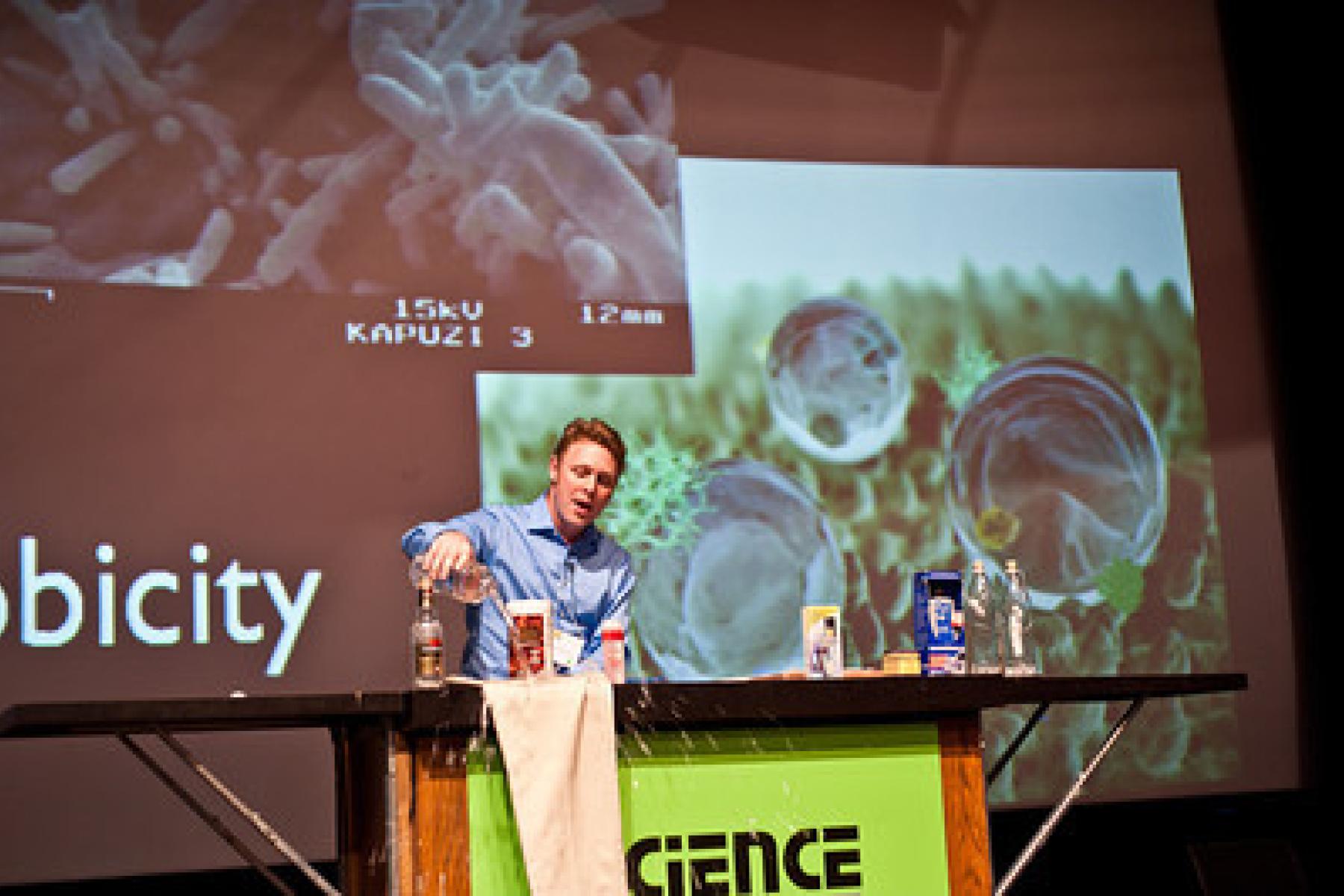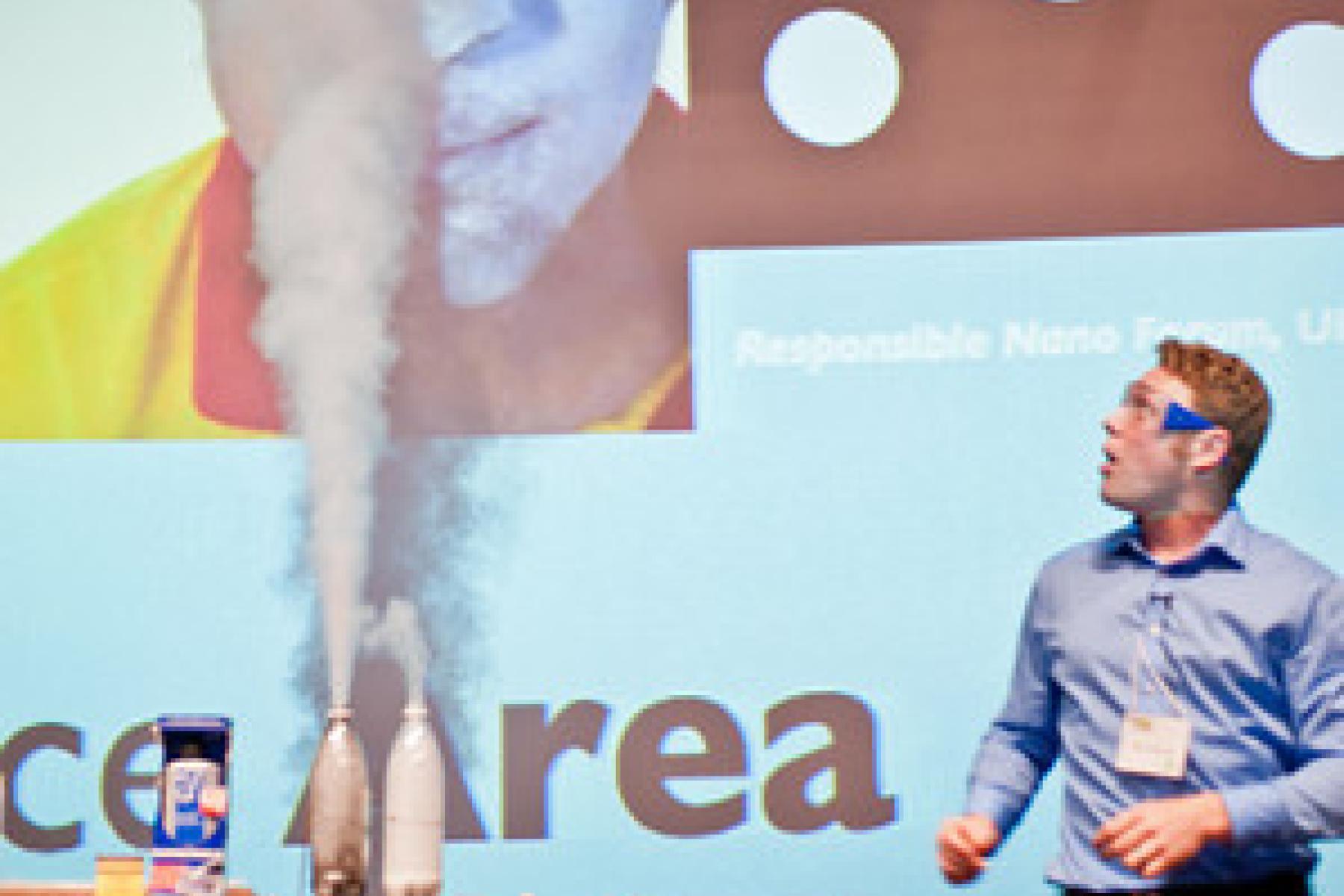DESCRIPTION
"Nanotech and Consumer Products" is a public presentation that introduces audiences to the growing role of nanotechnology in making consumer products, and encourages them to consider the potential environmental and health risks. During the presentation, visitors are guided through questions such as: What is nanotechnology, why does it matter, and where is it happening? How are nanomaterials being used in a growing number of consumer products that are available on the market today? What is known about the long-term environmental and health risks of nanotechnology, and how might the increased use of consumer products that are made through nanotechnology affect the environment? What might be done to address potential environmental and health concerns from nanotechnology, given the lack of a formal regulatory structure for consumer products in the United States?
DESCRIPTION
"Nanotech and Consumer Products" is a public presentation that introduces audiences to the growing role of nanotechnology in making consumer products, and encourages them to consider the potential environmental and health risks. During the presentation, visitors are guided through questions such as: What is nanotechnology, why does it matter, and where is it happening? How are nanomaterials being used in a growing number of consumer products that are available on the market today? What is known about the long-term environmental and health risks of nanotechnology, and how might the increased use of consumer products that are made through nanotechnology affect the environment? What might be done to address potential environmental and health concerns from nanotechnology, given the lack of a formal regulatory structure for consumer products in the United States?
OBJECTIVES
BIG IDEA
Nanotechnology is improving the production and performance of many products in the consumer market, but the long-term health and environmental implications of the use of nanotechnology in making these kinds of products is still unclear.
LEARNING GOALS
As a result of participating in this program, visitors will be able to:
1. Communicate some of the potential properties that are improved or enabled through nanotechnology, such as strength, stain resistance, surface area, and antimicrobial properties.
2. Understand that small particles of a material will often react more rapidly than large particles because of their large surface area
3. Convey some potential health and environmental concerns around the large-scale use of nanotechnology.
4. Understand that consumer products that are made through nanotechnology present both potential benefits for people and potential risks for the environment.
5. Describe some potential risks and benefits from the use of consumer products that are made through nanotechnology in both individual and societal contexts.
NANO CONTENT MAP
Nanometer-sized things are very small, and often behave differently than larger things do.
Scientists and engineers have formed the interdisciplinary field of nanotechnology by investigating properties and manipulating matter at the nanoscale.
Nanoscience, nanotechnology, and nanoengineering lead to new knowledge and innovations that weren't possible before.
Nanotechnologies—and their costs, utility, risks, and benefits—are closely interconnected with society and with our values.
DOWNLOAD FILES
Credits
Museum of Science
Developed for the NISE Network with funding from the National Science Foundation under Award Numbers 0532536 and 0940143. Any opinions, findings, and conclusions or recommendations expressed in this product are those of the authors and do not necessarily reflect the views of the Foundation.
Creative Commons Attribution Non-Commercial Share Alike 3.0 United States (CC BY-NC-SA 3.0 US).
View more details

NISE Network products are developed through an iterative collaborative process that includes scientific review, peer review, and visitor evaluation in accordance with an inclusive audiences approach. Products are designed to be easily edited and adapted for different audiences under a Creative Commons Attribution Non-Commercial Share Alike license. To learn more, visit our Development Process page.


